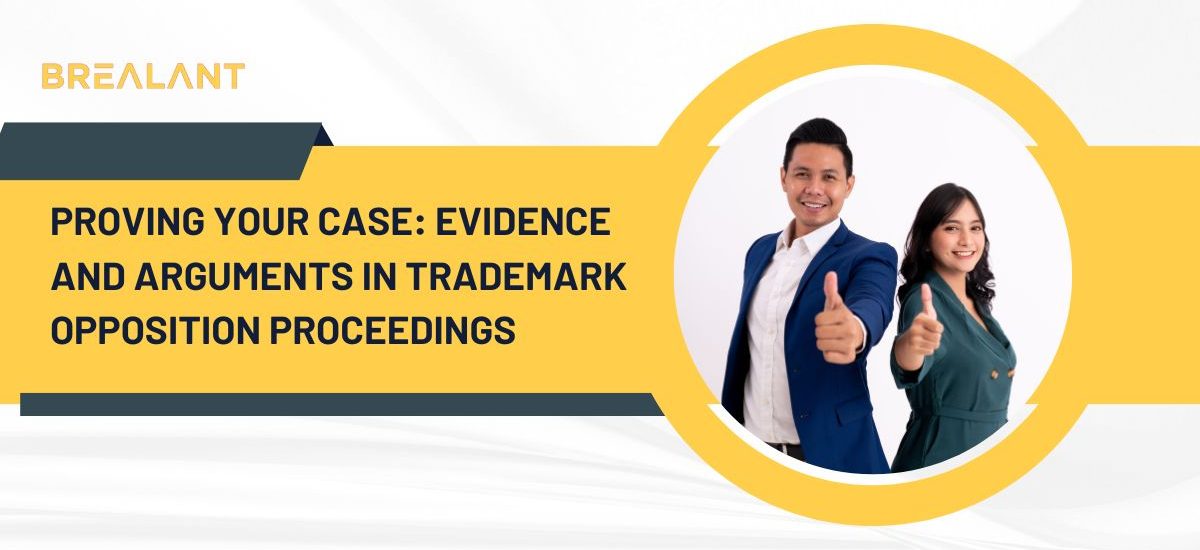Companies file trademark opposition proceedings to defend their intellectual property rights against trademark infringement claims. In opposition proceedings, the company will provide evidence that its trademarks are valid and its opponent has not conducted a proper trademark analysis. The company may also argue that the opponent’s trademarks violate its trademarks or that the marks are merely descriptive. What rights do trademark owners have when they file opposition proceedings against an allegedly infringing mark? This article will address the evidence and arguments in US trademark opposition proceedings to help you make the best case for your mark.
Both sides will make powerful arguments supporting their positions in the trademark opposition process. An attorney with experience in trademark law can help you understand which arguments to make and which evidence to present to win your case.
How do Trademark opposition proceedings take place?
Following the trademark application submission with the USPTO, the applicant must endure a protracted and difficult waiting period while the mark is scrutinized by a trademark examining attorney to ensure that it is sufficiently distinctive and does not infringe on the already-existing trademark rights of a prior applicant. If there are any concerns with the trademark, the examining attorney will submit it to the Official Gazette for opposition after about three to four months. If there are any issues with the trademark, the applicant will receive an office action explaining the issues and how they can be resolved.
Opposition proceedings are filed when an owner of a registered trademark believes that a mark is being used in commerce by another party without their consent or authorization. To prove that their mark is being infringed, the trademark owner must provide evidence that:
- The mark is registered with the USPTO;
- The mark is being used in commerce; and
- There is a likelihood of confusion among customers.
Companies use the US Trademark opposition process to protect their trademarks. The trademark owner will file a formal opposition with the US Patent and Trademark Office (USPTO) against another party’s proposed use of the trademark. The goal is to establish that there is a good chance that the mark will be recognized as distinctive and therefore deserves exclusive protection. The patent and trademark offices have a set process for reviewing these oppositions, and the evidence & arguments in the Trademark Opposition Proceedings guide provides legal guidance on this process.
There are many potential factors to take into account when deciding whether to oppose a mark, including:
- The similarity of the marks,
- The nature of the goods/services at issue, and
- How likely is it that consumers will perceive the marks as associated?
Demonstrating one or more of these factors will help prove your case.
The USPTO is concerned with striking a balance between the competing goals of protecting the trademark holder from pointless harassment and still allowing a truly concerned party the opportunity to contest the claim. The Trademark Act outlines many Causes of Action, or justifications, for which a person or business may file a trademark opposition lawsuit. The trademark applicant must submit an Answer to the Complaint within forty days of receiving the Notice of Opposition once they decide they want to contest the trademark opposition procedure. Without a response, the trademark owner risks losing their rights to the mark and having the application declared abandoned.
Trademark opposition proceedings are formal legal procedural steps taken by one party (the trademark defendant) against another party (the trademark claimant) to prevent the trademark from being used in violation of the law. To initiate these proceedings, the defendant must first identify the trademark and prove it is valid and protected. Next, the defendant must establish that the use of the trademark by the claimant is likely to cause confusion among customers or damage its goodwill. Last, the defendant must provide evidence of infringement and propose a damages remedy.
Conclusion
The Trademark Trial and Appeal Board (TTAB) will review the evidence provided by both parties to decide whether the mark is registered and/or should be canceled. In recent years, business owners have become increasingly wary of potential trademark infringement when they see their name being used by another business. This is due to a rise in trademark oppositions filed by businesses that feel their name has been appropriated without authorization. While filing a US trademark opposition process may seem straightforward, several factors can make it more challenging for the business owner to prove their case.
The trademark opposition process can be daunting; only a professional with good insight into trademark opposition proceedings can help you go through the process with ease. The tech-driven efficient IP solutions are provided only at Brealant TM. The firm strives to provide highly effective solutions for trademark applications and related aspects. Visit the official website and book your consultation today.
Disclaimer-Brealant provides access to independent attorneys and self-service tools, is not a law firm, and does not provide legal advice.










